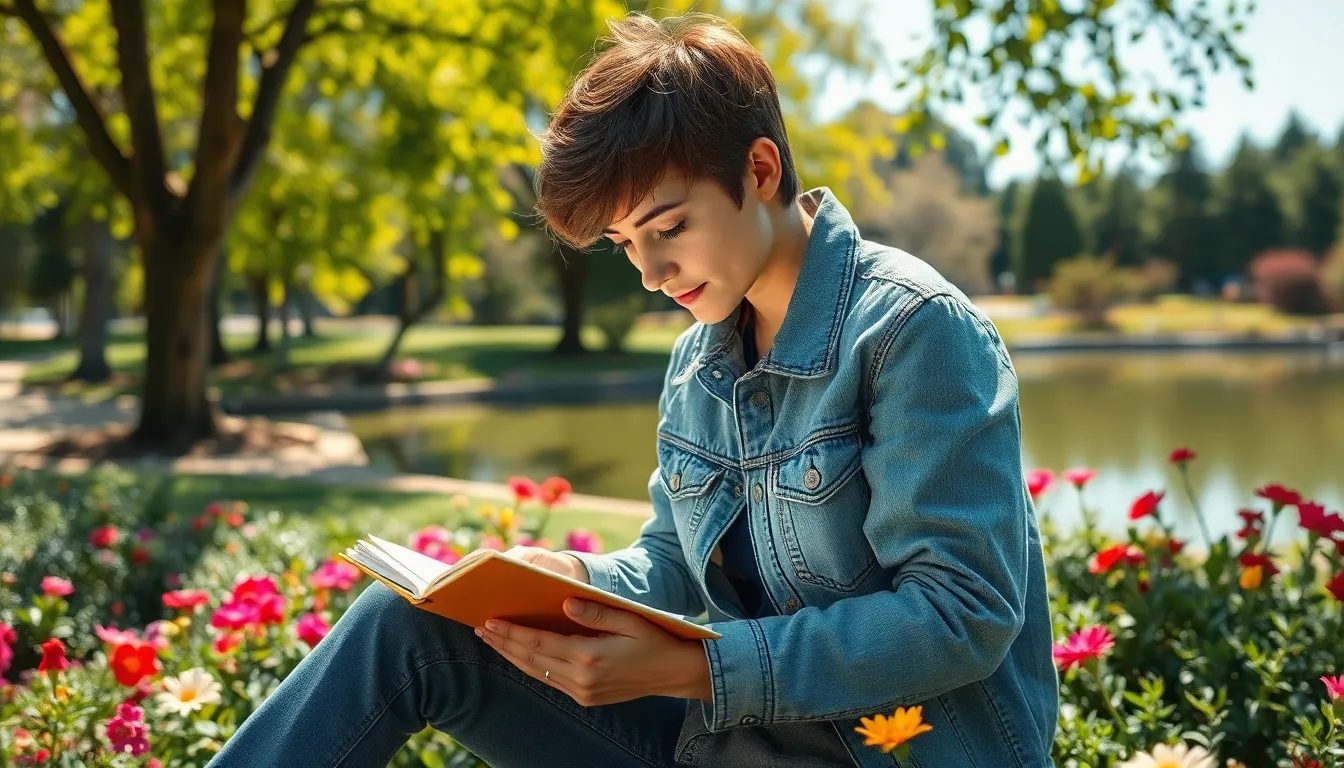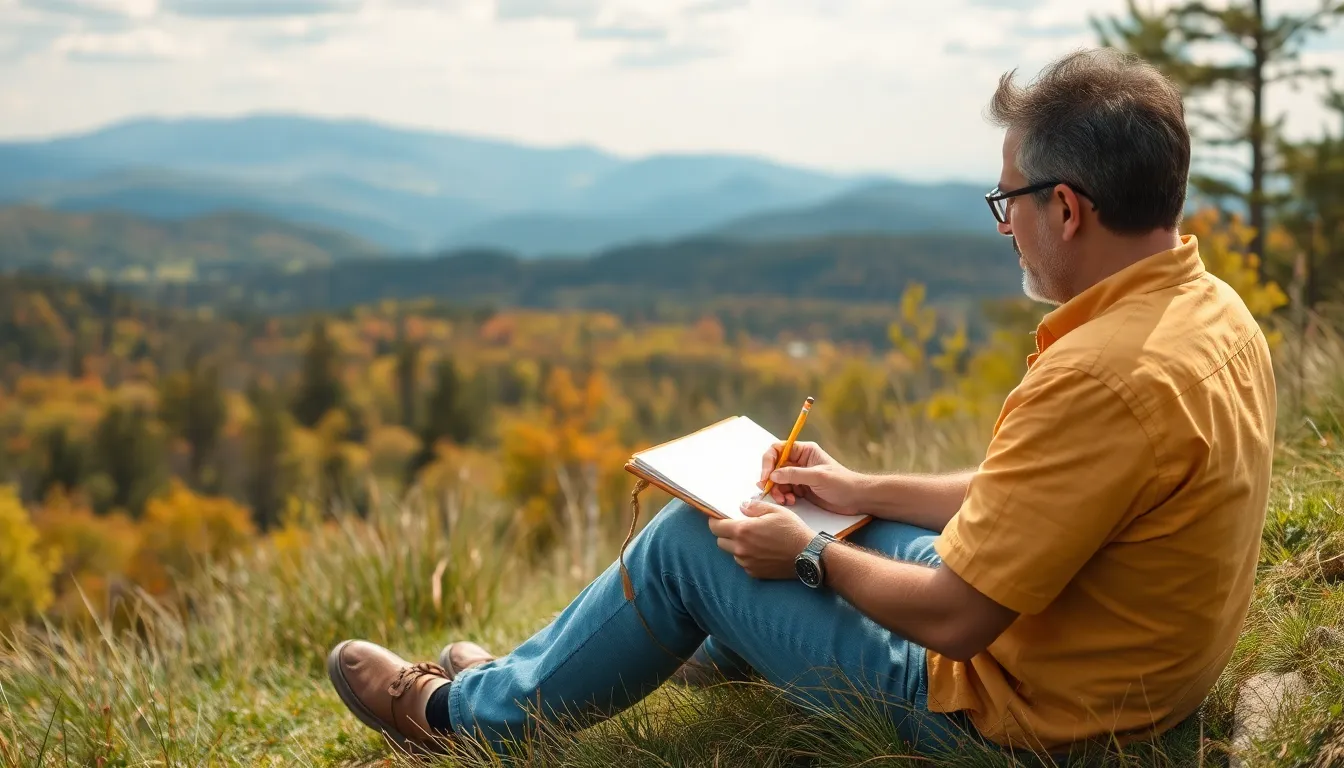When creativity takes a vacation, inspiration drawing swoops in like a superhero in a cape. It’s the secret weapon artists use to spark their imagination and breathe life into their sketches. Whether it’s a whimsical doodle or a detailed masterpiece, tapping into inspiration drawing can turn a blank page into a world of possibilities.
Imagine staring at a canvas that feels as empty as a cookie jar after a midnight snack. Inspiration drawing helps fill that void with ideas that dance on the tip of your pencil. It’s not just about replicating what you see; it’s about unleashing the wild and wonderful thoughts that bubble up from within. So grab your sketchbook and let’s dive into the delightful chaos of inspiration drawing, where every stroke can lead to something extraordinary.
Table of Contents
ToggleWhat Is Inspiration Drawing?
Inspiration drawing serves as a vital technique for artists seeking to unleash their creativity. This process encourages creativity and exploration, making the blank canvas a space of limitless potential.
Definition and Overview
Inspiration drawing refers to creating art guided by a source of motivation or personal insight. Artists often initiate this practice without a predetermined subject or concrete idea. Instead of replicating existing images, they allow their emotions to dictate the strokes and colors used. This organic approach fosters a unique form of expression. Clarity in thoughts often emerges during these spontaneous sketches. By embracing instinctive creativity, artists develop their style while discovering new dimensions of their artistic abilities.
Importance in Art
Inspiration drawing plays a crucial role in an artist’s development. This technique nurtures innovation, allowing individuals to break free from conventional limitations. Artistic exploration leads to the discovery of new themes and styles. By practicing inspiration drawing, artists gain confidence, enhancing their willingness to experiment. It fosters a deeper connection to one’s feelings, enriching the overall creative process. Capturing raw emotions through art becomes easier with this technique. Ultimately, inspiration drawing strengthens artistic voices, making each artist’s work more authentic and personal.
Techniques for Inspiration Drawing


Inspiration drawing employs various techniques that enhance an artist’s ability to create freely and without constraints.
Observation Skills
Observation skills are fundamental in inspiration drawing. They involve keenly analyzing surroundings to extract visual cues and details. Studying objects, nature, or people promotes a deeper understanding of forms and textures. Many artists utilize sketchbooks to capture fleeting moments and impressions. This practice nurtures a heightened awareness of subtle nuances, ultimately enhancing an artistic voice. Practicing visualization can also aid artists in translating their observations into their unique styles.
Imagination and Creativity
Imagination fuels the essence of inspiration drawing. It enables artists to visualize scenarios and concepts beyond immediate reality. Engaging in brainstorming sessions can stimulate original ideas. Artists frequently try exercises like free association and word prompts to spark creative thoughts. Visualizing abstract ideas allows for innovative compositions. Adding elements from dreams or memories can enrich the drawing experience. Bringing spontaneity into the process often leads to unexpected and exciting outcomes.
Sources of Inspiration
Inspiration can stem from various sources that ignite an artist’s creativity. Understanding these influences enhances the drawing experience.
Nature and Environment
Nature serves as a profound source of inspiration. Vibrant colors in landscapes, intricate patterns in leaves, and the dynamic movement of animals provide countless visual elements. Observing the changing seasons fosters creativity, as each season offers its unique aesthetic. Artists often find tranquility in natural settings, allowing them to connect deeply with their surroundings. Sketching outdoors captures fleeting moments, illuminating subtle details often overlooked. Exploring different environments, such as forests, beaches, or urban areas, sparks innovative ideas for artistic expression.
Art and Artists
Art itself offers a wealth of inspiration. Exploring various art forms, including painting, sculpture, and photography, reveals different techniques and styles. Encountering the works of renowned artists can evoke emotions and challenge perspectives. Collaborating with fellow artists encourages the exchange of ideas, expanding creative horizons. Visiting galleries and museums frequently stimulates new thoughts about composition and subject matter. Analyzing contemporary and historical art movements can inspire originality in one’s own work and foster a deeper connection to art history.
Everyday Life
Everyday life provides rich inspiration for artists. The mundane transforms into moments of creativity, reflecting personal experiences. Observing people in daily routines captures unique emotions and interactions. Everyday objects can inspire composition and storytelling, making the ordinary extraordinary. Conversations and activities can spark new ideas, encouraging artists to draw from their immediate surroundings. Keeping a journal of daily observations allows artists to document inspiration as it arises, creating a visual narrative of their experiences.
Benefits of Inspiration Drawing
Inspiration drawing presents numerous benefits that contribute to an artist’s growth and expression. Skill development is one key advantage.
Skill Development
Drawing from inspiration enhances various artistic skills. Artists improve their technical abilities by experimenting with different techniques. Experimentation leads to a broader understanding of mediums, such as charcoal, ink, or digital tools. Analyzing inspirational sources sharpens observation skills, enabling artists to capture intricate details. Additionally, the practice encourages the exploration of styles, pushing boundaries beyond comfort zones. Regular engagement with inspiration drawing builds resilience and adaptability in an artist’s work. As creativity flourishes, artists gain confidence in their unique voice and perspective.
Emotional Expression
Emotional expression thrives in the practice of inspiration drawing. Artists often channel their emotions onto the canvas during spontaneous sessions. Each stroke can reflect feelings, capturing moments of joy, sadness, or nostalgia. This direct link between emotion and art fosters authenticity, resonating with viewers. Exploring personal themes through inspiration drawing creates deeper connections to the work. Sharing these pieces can inspire dialogue about shared experiences, enriching the artistic community. By embracing this emotional journey, artists often find a renewed sense of purpose and meaning in their creative endeavors.









